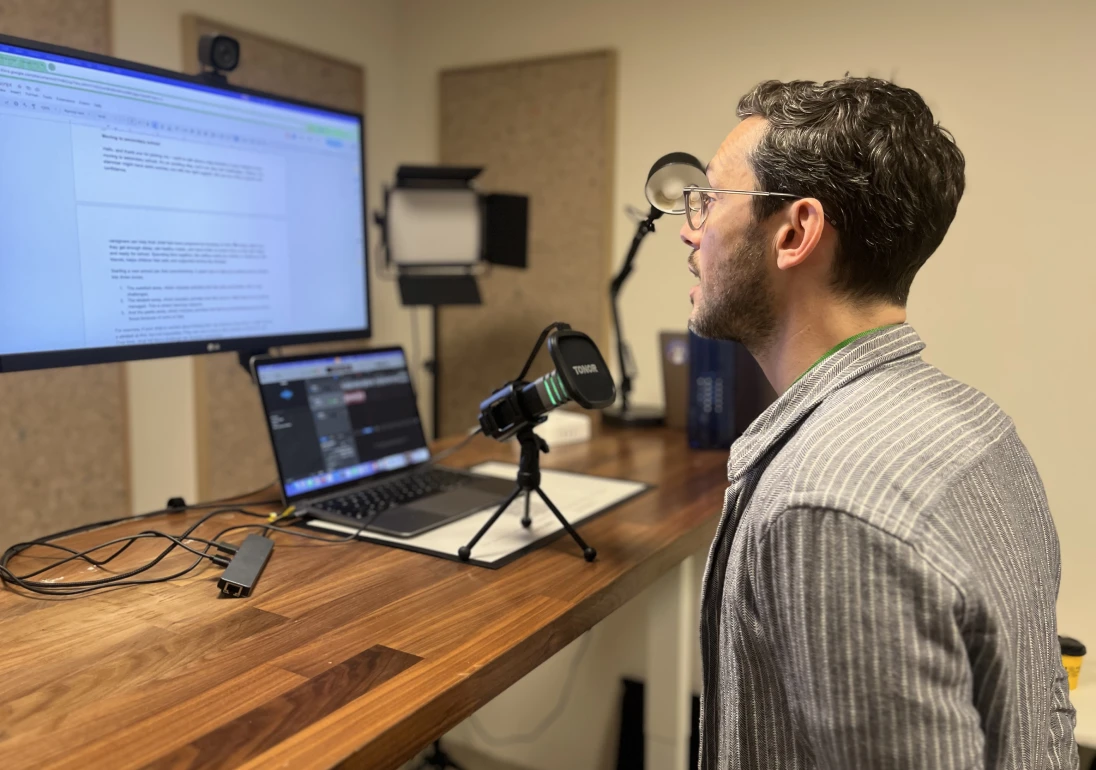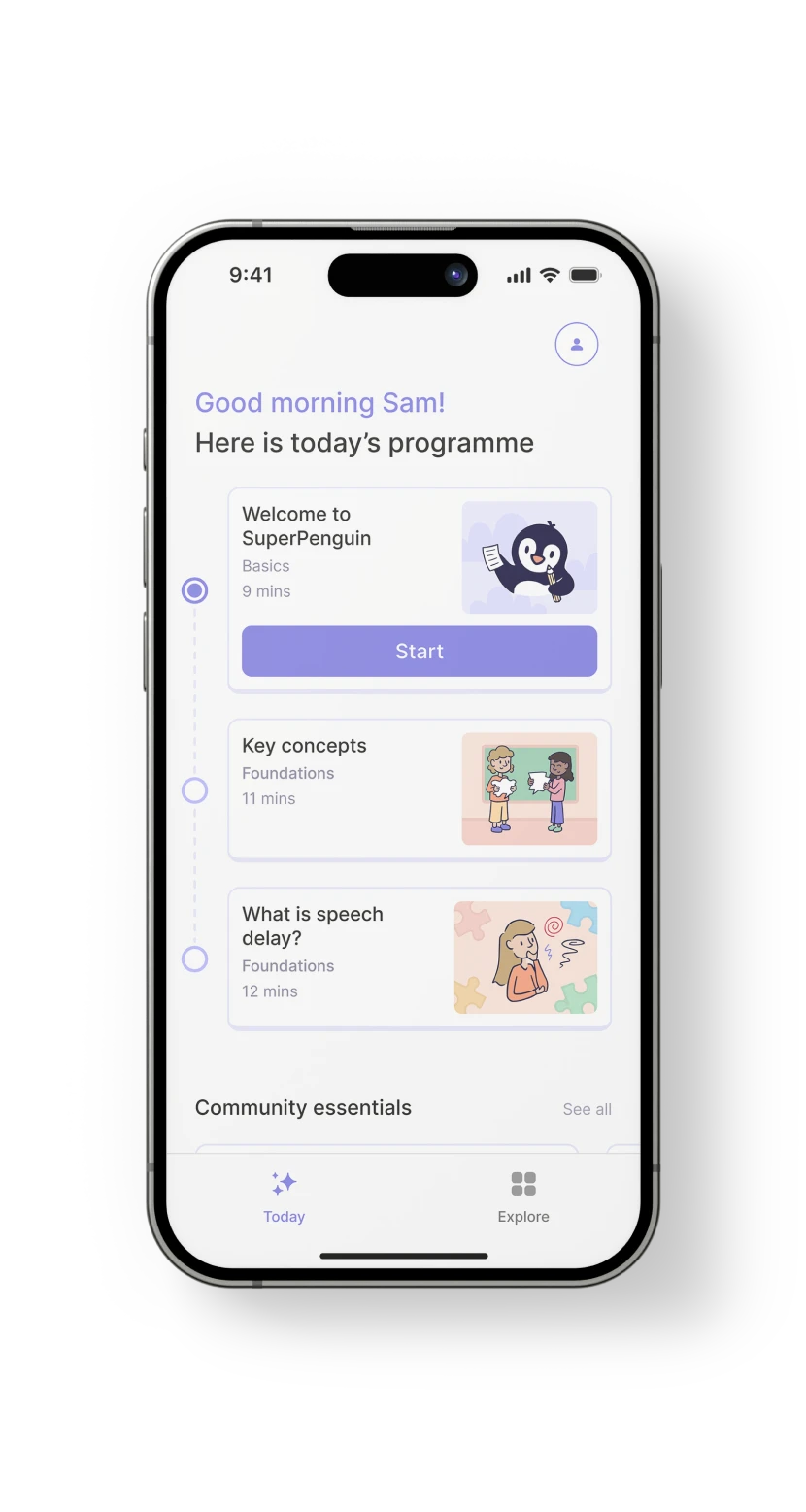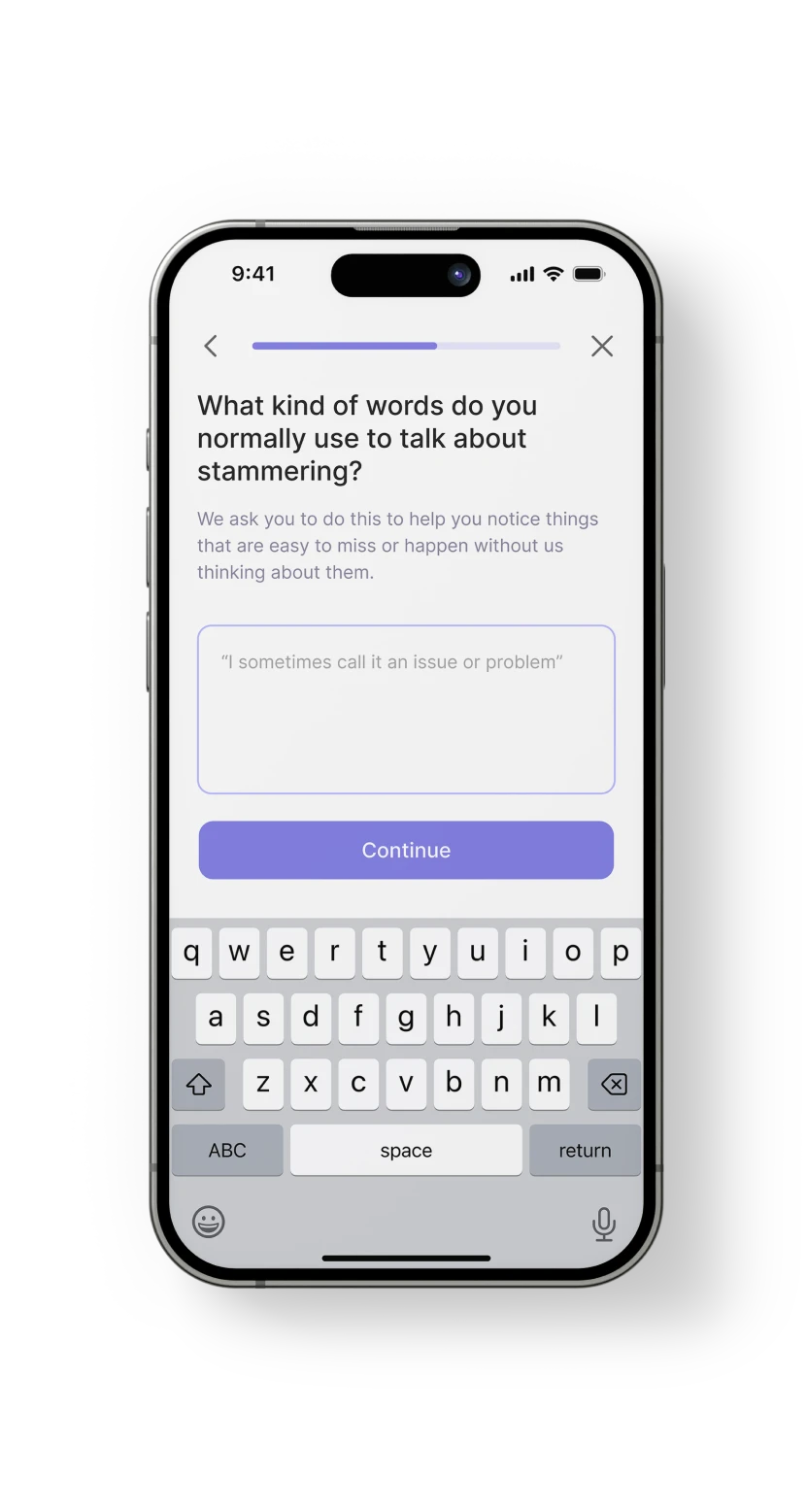























SuperPenguin can provide support at every point in the care pathway. With our adaptable framework we can fit your needs.

Universal topics before assessment
Content and tools that are helpful for all carers.

Targeted content after assessment whilst waiting
Tailored guidance to prepare for and make the most of therapy.

Alongside speech and language therapy
Practical tools and strategies to complement in-person sessions.

Continued support after speech and language therapy
Resources to maintain progress and build lasting confidence.
Easy personalised access for carers
SuperPenguin can be shared with any client using a simple activation key, preloaded with your trust’s details and tailored content suitable for each user.
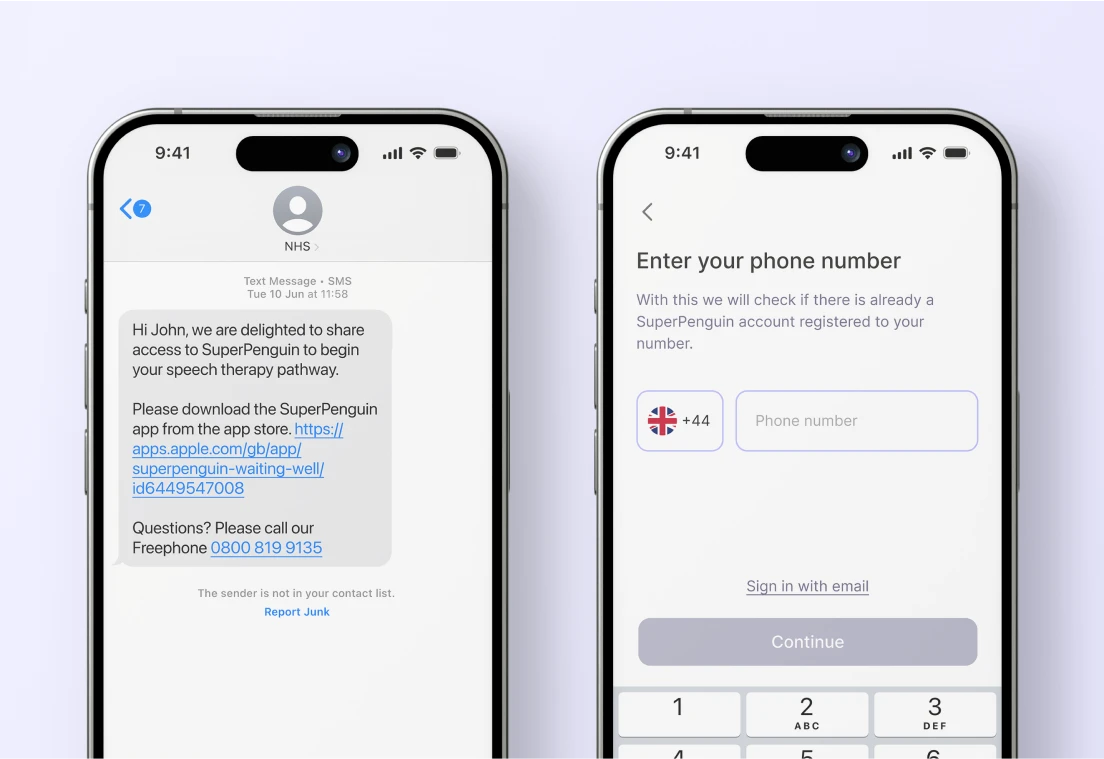
SuperPenguin clinician dashboard
Keep track of your organisation and engagement
The SuperPenguin dashboard provides all the information you need on your organisation’s use of SuperPenguin, from high level insights to details on each client, for bespoke care.
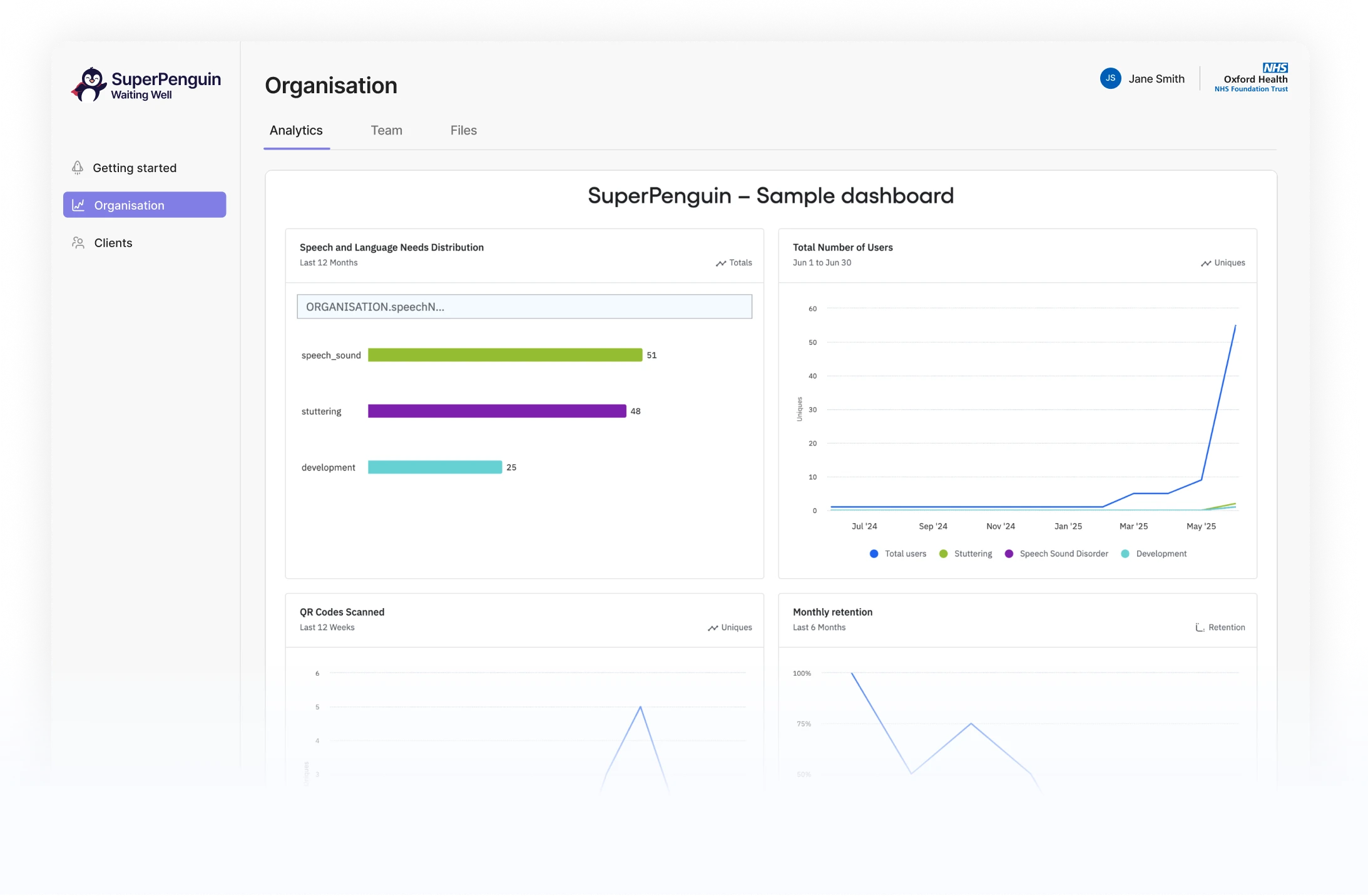
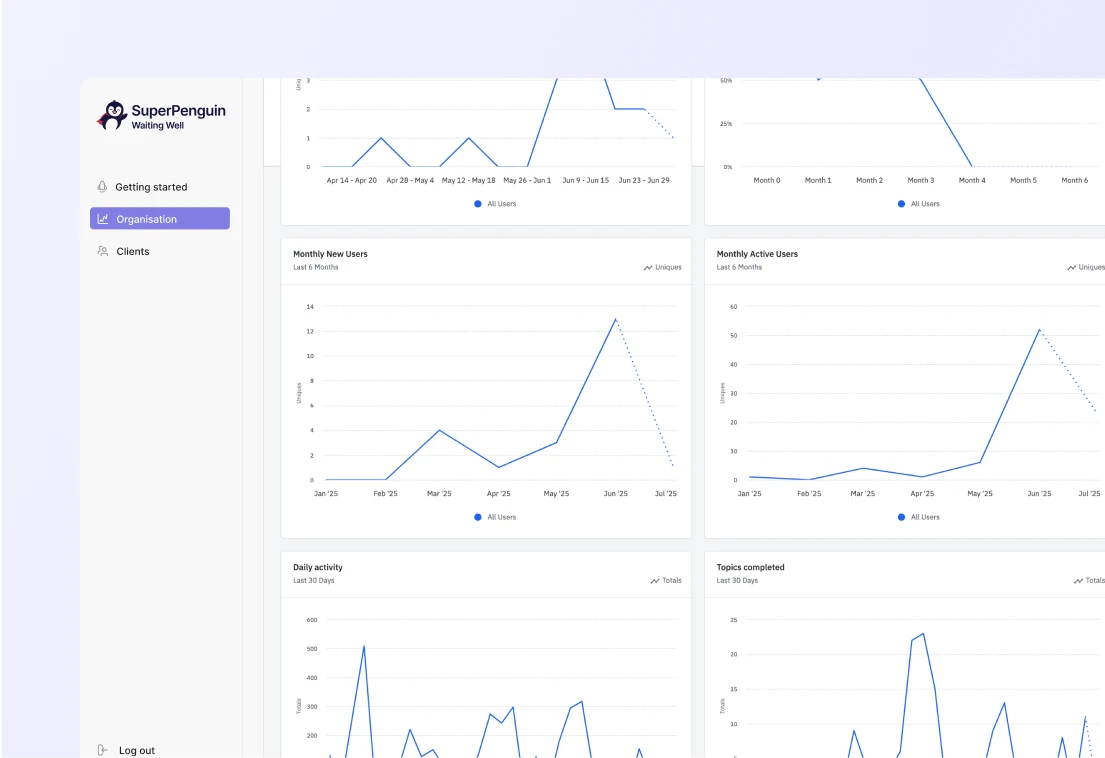
Monitor key performance indicators and distribution
Track the uptake of SuperPenguin in your trust and get real-time data on engagement, progress, and outcomes.
View client-level analytics and customise support
View individual client progress and adapt support to match each person’s unique needs.
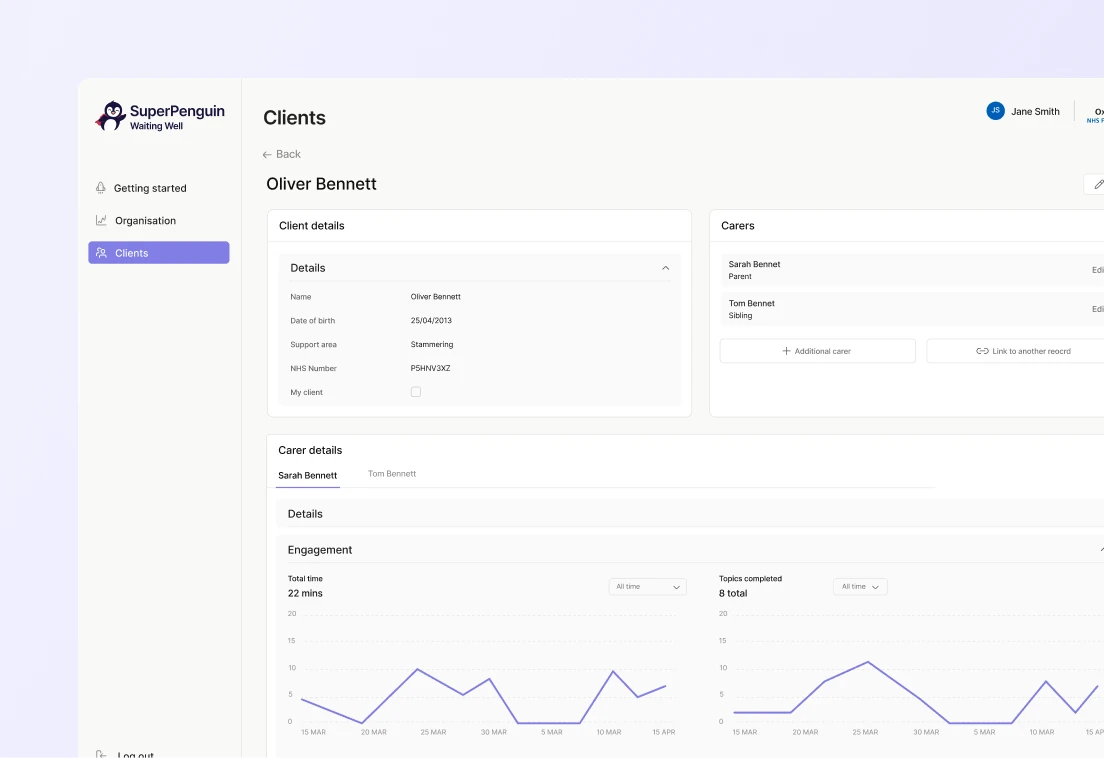
Developed by qualified speech language therapists and language experts.
All of our topics are created by qualified speech and language therapists, in collaboration with a dedicated community of expert carers with lived experience.
